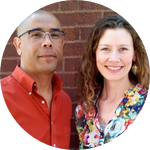About This Project
Our 18-week study asks how people living with brain and mind injuries like PTSD or acquired and traumatic brain injury, benefit from simultaneously engaging in multiple recuperative activities. These practices include community service learning, contemporary art interpretation, mindfulness and meditation, and Brazilian Jiu Jitsu. We examine how these activities affect quality of life, brain health, and community integration for people living with brain and mind injuries and their communities.
Ask the Scientists
Join The DiscussionWhat is the context of this research?
Brain and mind injuries are more than just physical. Their effects ripple out to family, friends, and the broader community. They have social meaning. Because these injuries are complex social events, our responses must also be complex and include care for these 'social systems'.
Taken together, these recuperative practices or 'modalities' enhance participants' ownership of their own recovery, benefit cognitive and physical function, develop the capacity to regulate emotional response, and build a sense of belonging and community.
Participants who experienced the primary injury will be joined in all activities by a friend or loved one, and we will examine shifts in the shared understanding, and quality of life (physical and emotional) of all involved, over the duration of the study.
What is the significance of this project?
People who live with brain injuries face astronomical costs associated with brain-focused treatment and aftercare. 'Human' costs to individuals with injuries and their support systems are ongoing. The costs ripple out beyond the individual and recovery is long and often unending.
We are developing a new treatment program designed to be a flexible and responsive approach. The treatment is less expensive than what is currently available. The treatment provides strengthened support systems for individuals with these injuries. And, this approach has no end point where one is 'cured'.
What are the goals of the project?
For this project we are developing the 16 partcipants' sense of agency and capability. We also integrate the immediate community and aim to improve the participants' quality of life.
With the funding we will measure the efficacy of having four modalities function in complementary ways. We will measure whether participant are achieving goals they set for themselves. We will also assess the desires and needs of participants daily, cultivate capacity and strength within participants' support systems, determine 'social meaning' ascribed to participants, and enable support systems to transform in beneficial ways.
Budget
We will test saliva and hair samples to measure participants' cortisol levels as an indicator for stress. This testing will be conducted alongside evaluation of participants' self assessed quality of life, cognitive function, and social integration.
As a stretch goal we will use additional funds to share our findings at conferences and symposiums.
Meet the Team
Team Bio
Maurice Stevens
Associate Professor, Comparative Studies, College of Arts & Humanities. His work focuses on the social meanings of injury and its aftermath. Maurice loves to stir fry and practice Brazilian Jiu Jitsu.
Tracie McCambridge
Educator for Docent and Teacher Programs, Wexner Center for the Arts. Tracie is interested in how engagement with the arts can impact health and wellness for individuals and communities. Tracie likes to hike, garden, and is learning to meditate.
Project Backers
- 20Backers
- 103%Funded
- $3,778Total Donations
- $188.90Average Donation

